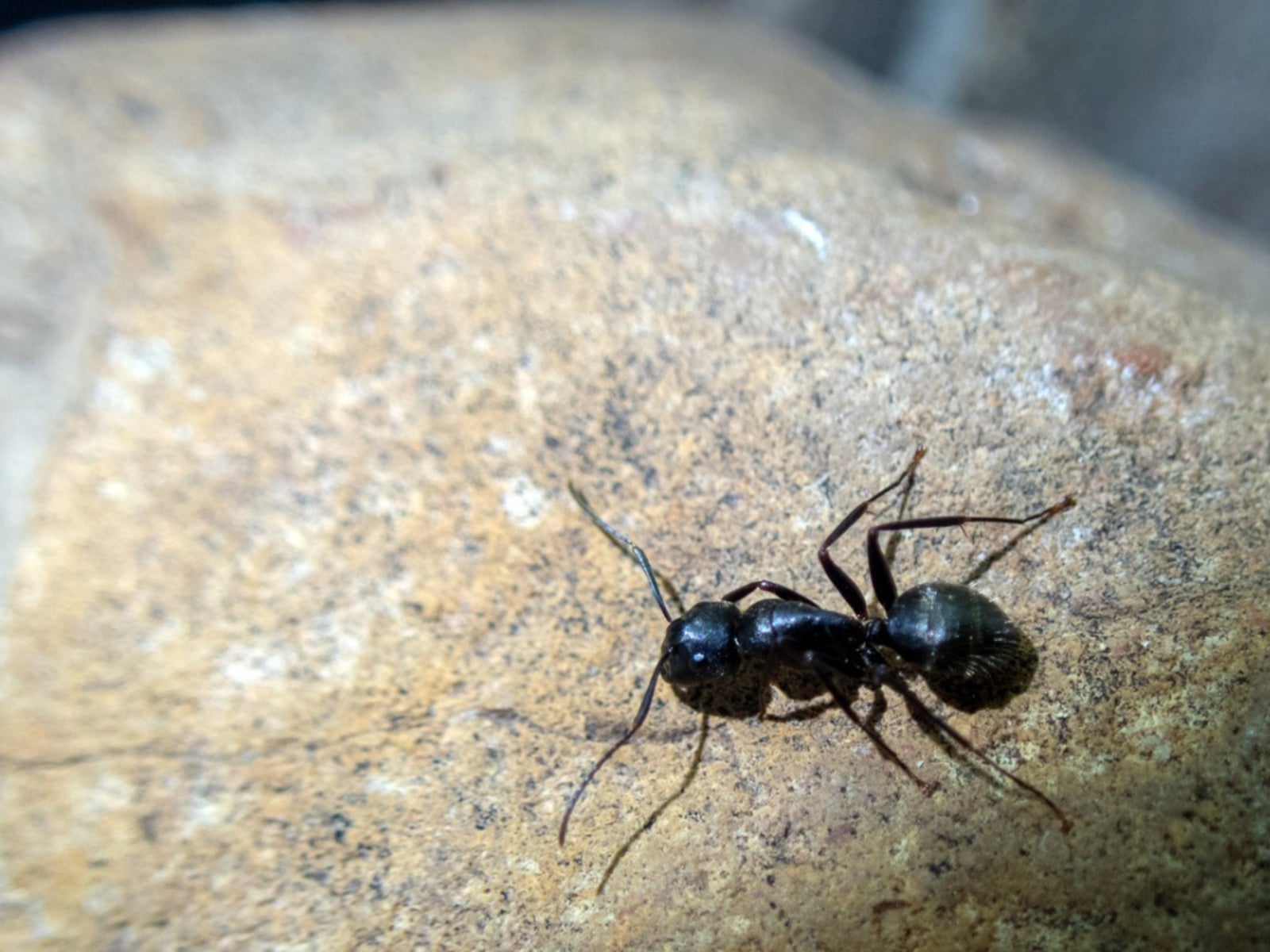CARPENTER ANTS - A DIY GUIDE
Carpenter ants don't eat wood and, with a bit of patience, you can eliminate them with homemade remedies.


HOW TO GET RID OF CARPENTER ANTS
Carpenter ants can be a real nuisance, but before you leap to toxic chemical extermination of the pests, consider treating the situation with a homemade deterrent. First, learn about carpenter ants and how to identify them and their activities.
How to Identify Carpenter Ants
Carpenter ants can be destructive during spring and summer months. They build nests to lay their eggs in moist wood and can often find their way into areas behind tiles in the bathroom, around bathroom fixtures, sinks, and dishwashers. But don’t be fooled - they need moist wood for their eggs, but they also find hollow spaces in wooden doors, under roof soffits, inside curtain rods, in foam insulation and many other protected spots where they can colonize.
Experts say they have a “waist” with one node (called a petiole) and a thorax (the area behind the head) that’s evenly round when you look at it from the side. Worker ants are black or red and black.
They can be black or reddish brown, depending on your region. Black ones are around ¼ to ½ inch, but they can be found together in mixed sizes. Another breed (called C.sayi) are reddish brown on the head and thorax with black abdomens and are smaller, less than a half inch long.
Carpenter Ant Damage
Unlike termites, carpenter ants don’t actually eat wood, but create damage by burrowing into wood to create their nests. You will recognize their presence when you see a nice clean hole and a bit of sawdust, and you may hear a faint, wispy crackling sound in the walls. Their tunnels and nests are made smooth by their chewing.
They primarily feed on insects and honeydew produced by aphids and scale insects. In your kitchen they will look for meat and sweet foods like sugar, syrup and honey. Outside, they can cause a certain amount of damage to trees.
Their real job is to break down fallen wood in the forest, and my personal experience is that forested areas are where they are most prevalent. But, sometimes they become too interested in other wooden structures, like your home.
Gardening tips, videos, info and more delivered right to your inbox!
Sign up for the Gardening Know How newsletter today and receive a free copy of our e-book "How to Grow Delicious Tomatoes".
DIY Bait to Eliminate Carpenter Ants
Consult with a professional exterminator to determine whether there are non-toxic remedies for eliminating carpenter ants. They may have easier and more efficient methods of extermination. But a slower but more environmentally friendly method involves setting out bait.
If you aren’t sure where the pests are nesting, set out some bait that carpenter ants will enjoy. Mix up one third powdered sugar to two-thirds boric acid in water. Fill small containers in the general areas where you’ve seen the ants, like on a porch or balcony. Worker ants will eat the “food” and take it to their nests to share with the rest of the colony by regurgitating it. Eradicating them in this manner could take a few weeks. Do not put insecticide directly on the bait food because it will kill the worker ants before they return to share the food with the colony.
If you suspect a nest is located behind a wall, the boric acid solution can be sprayed through an electrical outlet into the void behind the wall. Ants travel along electrical wires and will consume the sugar/boric acid. But use caution: Be careful to avoid electrical shock if you decide to try this. You may want to turn your electric power off just to be safe.
Carpenter ants are persistent but if you are patient, you can eliminate them from your home and property with these homemade remedies. If you’re lucky enough to see an exposed nest, spray it directly with insecticidal soap to eradicate the colony.
Finding Carpenter Ant Nests
There is no easy way to kill carpenter ants. You may choose to find an exterminator who will return to re-treat your property, but when possible, always opt for organic products.
Outside, look for carpenter ant tree damage and activity in rotting wood, stumps, or wooden structures. Inside, nests and carpenter ant damage are more difficult to find. Laying out bait may help you follow the ants back to their nest. They are most active between sunset and midnight.
An interesting fact: Ants do not see the color red, so a great way to track them is to cover a flashlight with a red film and follow their activity at night.

Caroline Bloomfield is Manager of Marketing Communications at Gardening Know How since 2019. A northwest native, she has resided and gardened in multiple zones in the U.S. and is currently at home in Bandon, Oregon. Writing and editing for various publications since 1998, her BA in American Studies from Southern Maine University includes an emphasis in English. She was raised in California by avid gardeners and continues to enjoy the natural world with an appreciation for the concepts of sustainability and organic care for the planet.
-
 8 Perfect Flowers To Plant With Tomatoes To Boost Yields & Banish Pests
8 Perfect Flowers To Plant With Tomatoes To Boost Yields & Banish PestsDon’t forget flowers when choosing companion plants for your tomato beds or pots. These pretty, fragrant blooms add beauty but are also highly beneficial.
By Mary Ellen Ellis
-
 Want The Longest Lasting Hydrangea Flowers? Grow These 8 Panicle Hydrangea Varieties
Want The Longest Lasting Hydrangea Flowers? Grow These 8 Panicle Hydrangea VarietiesFor ornamental shrubs that deliver the longest flowering seasons with plush blooms and delicate hues, these panicle hydrangea varieties are essential in your yard
By Tonya Barnett